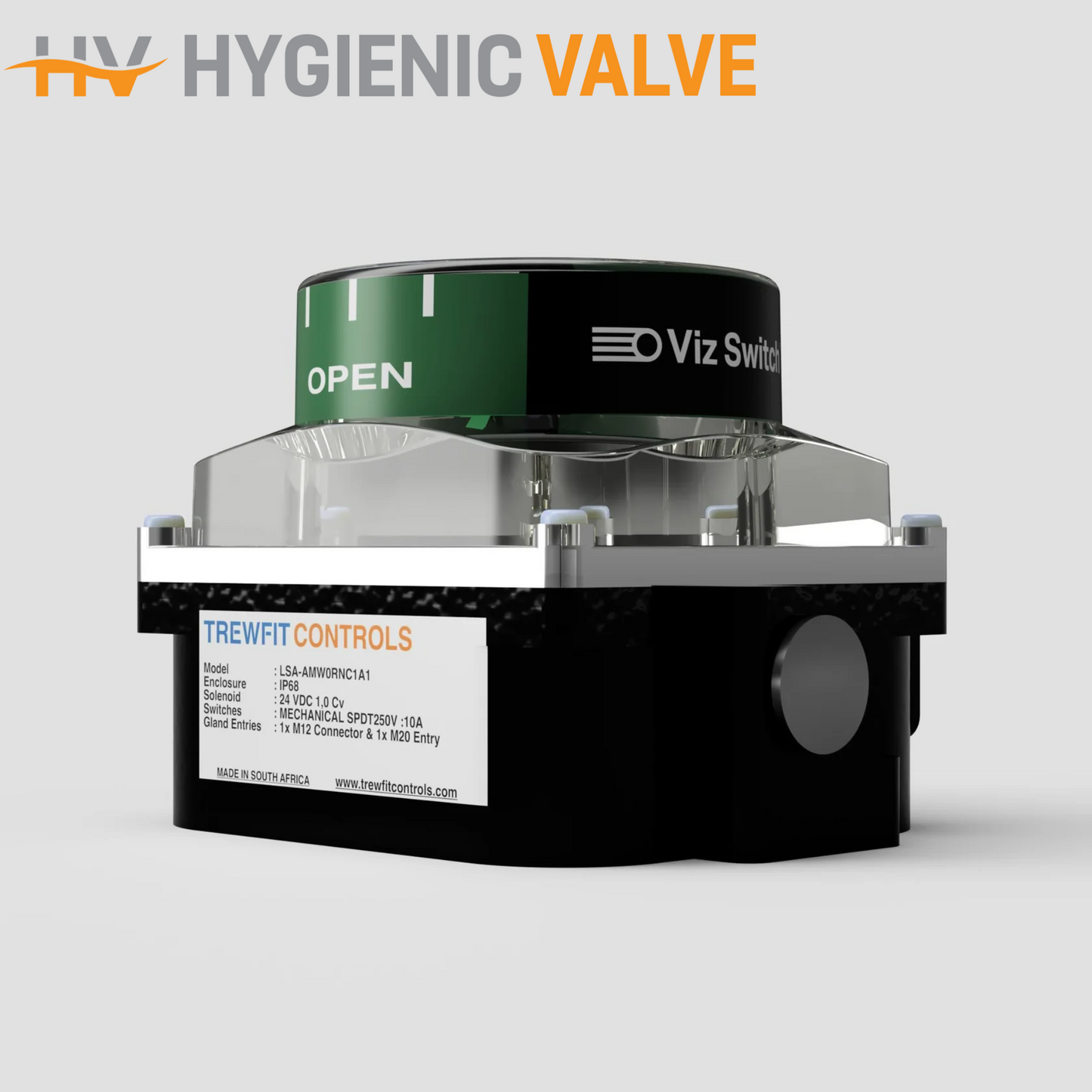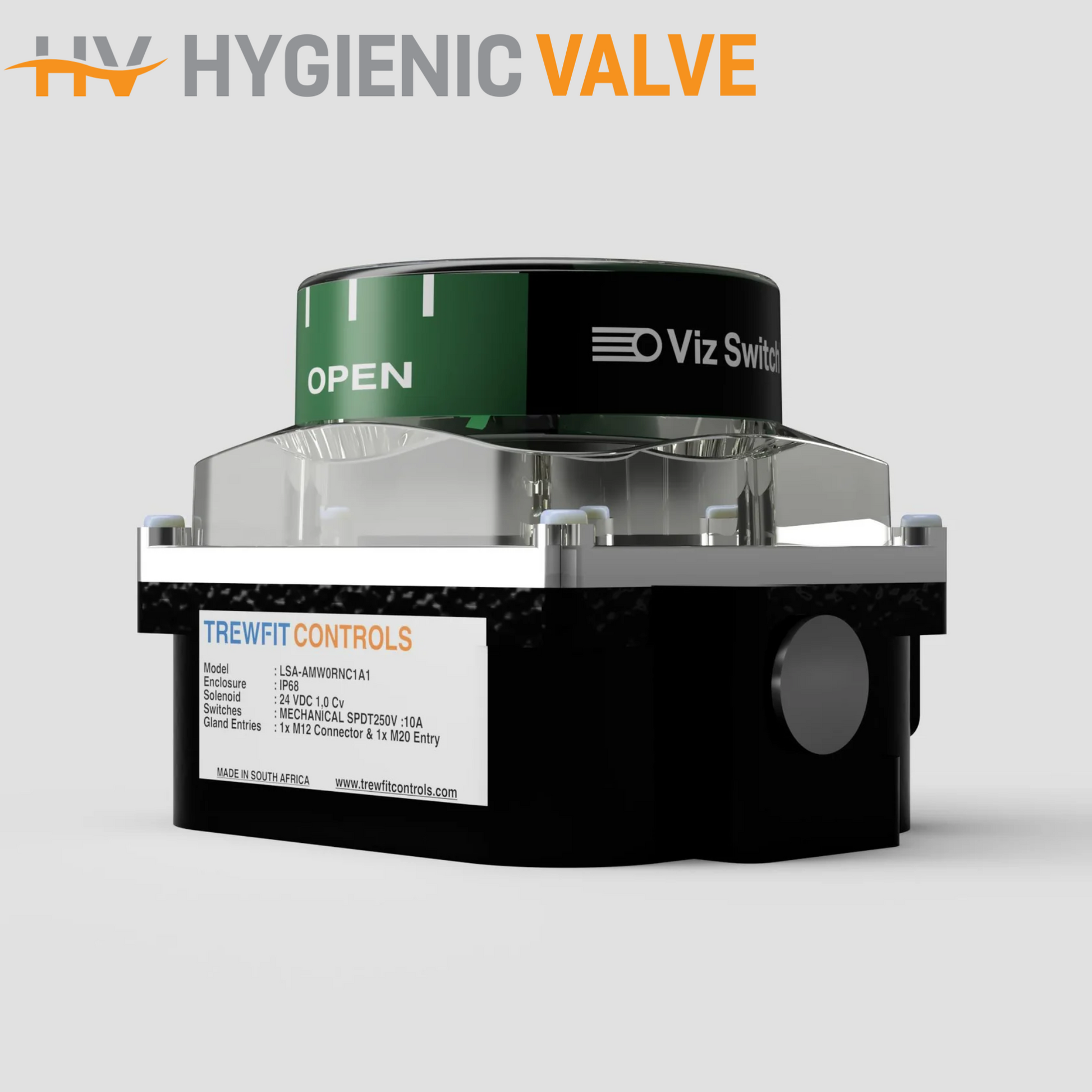Hygienic Valve
Trewfit Controls Mechanical Limit Switchbox – SPDT, 250V 10A, IP68, 2 x M20 Entries
Trewfit Controls Mechanical Limit Switchbox – SPDT, 250V 10A, IP68, 2 x M20 Entries
Couldn't load pickup availability
The Trewfit Controls Mechanical Limit Switchbox provides robust and accurate valve position feedback for industrial automation systems. Fitted with a Single Pole Double Throw (SPDT) microswitch rated for 250V AC, 10A, it ensures reliable signalling for open and closed valve positions in both pneumatic and electric actuator assemblies.
Engineered with a weatherproof IP68 enclosure, the unit is built to withstand dust, moisture, and challenging site conditions. Dual M20 cable entries offer convenient and flexible wiring options, while the mechanical visual indicator allows for quick status checks at a glance.
Ideal for a range of process industries including water treatment, food and beverage, and chemical processing, this limit switchbox from Trewfit Controls combines durability with dependable performance.
Key Features:
- SPDT switch rated 250V 10A for versatile electrical applications
- IP68-rated housing for superior protection in harsh conditions
- 2 x M20 cable entries for simplified on-site wiring
- Mechanical visual indicator for real-time valve status
- Compatible with actuated ball and butterfly valve setups
Share

FAQ's
What is the difference between a valve and an actuator?
What types of actuators are available?
The main types of actuators are:
Pneumatic actuators – use compressed air for fast, reliable operation.
Electric actuators – use electrical power for precise control.
Hydraulic actuators – use fluid pressure for high-torque applications.
Each type offers unique advantages depending on the environment, media, and system control needs.
How do I choose the right actuator for my valve?
To select the correct actuator, consider:
Valve type and torque requirement
Power source available (air, electric, or hydraulic)
Operating environment (temperature, humidity, hazardous area)
Control signal type (on/off or modulating)
Matching actuator torque and compatibility with the valve’s ISO mounting ensures reliable performance.
What are the main types of valves used in automation?
The most common valves in automated systems include:
Ball valves – for tight shutoff and quick operation.
Butterfly valves – for larger flow control with compact design.
Globe valves – for precise throttling and flow regulation.
Check valves – to prevent backflow.
Gate valves – for full bore flow isolation.
What’s the difference between a double-acting and spring-return actuator?
Double-acting actuators use air (or power) to both open and close the valve.
Spring-return actuators use air to open (or close) the valve, and a built-in spring to automatically return it to a safe position when power or air is lost — ideal for fail-safe operation.
How often should valves and actuators be serviced?
Regular maintenance intervals depend on operating conditions, but a good rule of thumb is to inspect every 6–12 months.
This includes checking for leaks, lubrication, seal wear, and actuator responsiveness to prevent unexpected downtime.

